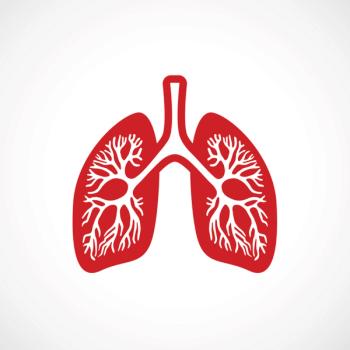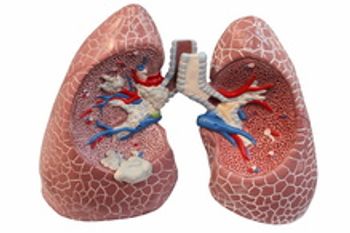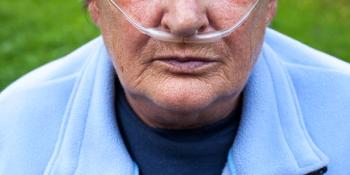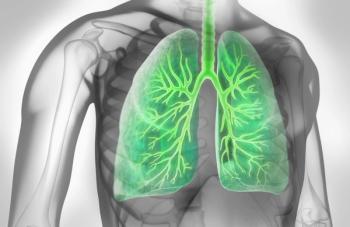
Two CHEST 2020 abstracts looked at mortality risks for patients with chronic obstructive pulmonary disease (COPD).

Two CHEST 2020 abstracts looked at mortality risks for patients with chronic obstructive pulmonary disease (COPD).

Major issues still surround COPD treatment, noted Nicola Hanania, MD, MS, pulmonary critical care physician and director, Airway Clinical Research Center, Baylor College of Medicine, Houston, Texas.

A study analyzed the personal and family history of patients who developed chronic obstructive pulmonary disease (COPD) before age 50.

A new national study is highlighting disparities in morbidity and barriers to care that face patients with chronic obstructive pulmonary disease (COPD) living in in rural areas.

While researchers found short periods of acute exercise did not significantly increase circulating concentrations of fibrinogen and C-reactive protein in patients with COPD, they did observe increases in total leukocyte and blood neutrophil counts.

Just 24.7% of elderly patients with chronic obstructive pulmonary disease (COPD) included in the study demonstrated correct usage of their inhaler.

This is the first large observational study to assess the relationship between accelerated forced expiratory volume in 1 second decline and the risk of cardiovascular disease (CVD) outcomes and mortality for patients with chronic obstructive pulmonary disease (COPD).

The researchers found that just 13% of participating providers adhered to the recommended low dose (40 mg) of oral prednisone for patients with acute exacerbations of chronic obstructive pulmonary disease (AECOPD).

Data from a meta-analysis suggest chronic obstructive pulmonary disease (COPD) could increase the risk of long-term all-cause mortality for patients with heart failure.

Researchers found that 12% of patients underwent testing even after care teams determined they were actively dying of chronic obstructive pulmonary disease (COPD) and the aim of care shifted to comfort.

The findings have implications for patient self-management of their chronic disease, and clinicians should screen for worsened cognitive function, the researchers wrote.

The assessment of chronic obstructive pulmonary disease (COPD) now allows for the evaluation of various patient-reported outcomes (PROs); however, these PROs assess different disease features than exercise test outcomes.

The same group of patients had their homocysteine level tested when their COPD was exacerbated and also when it was not.

Remote patient monitoring of patients with COPD can offer clues about what happens before an exacerbation.

A review on the diagnosis, prevalence, and clinical impact of sarcopenia in chronic obstructive pulmonary disease (COPD) has found that sarcopenia is both prevalent and negatively impacts clinical outcomes in patients with the disease.

Can muscle mass predict whether patients with chronic obstructive pulmonary disease have a longer hospital stay?

Researchers sought to determine the influence of geographic distance from a hospital on patients' length of stay or emergency department presentation for chronic obstructive pulmonary disease.

Advanced age, prolonged use of non-invasive ventilation (NIV), and unsuccessful response to NIV are independent predictors for long-term mortality in chronic obstructive pulmonary disease (COPD), according to a recent report.

Compared with non-invasive ventilation (NIV), high-flow nasal cannula (HFNC) oxygen therapy carried less risk of treatment failure and had better tolerance and comfort among patients.

Activity trackers, like Fitbits, are not accurate enough for clinical use but may be helpful for coaching in conditions like COPD, a study says.

A new study has found that muscle loss can lead to increased rates of mortality and morbidity in patients with chronic obstructive pulmonary disease (COPD). However, one expert remains skeptical whether the study represents the full scope of patients at risk.

Researchers found that cough reflex sensitivity is amplified during chronic obstructive pulmonary disease (COPD) exacerbation and reduces after recovery, while its persistence can help serve as a predictor for future exacerbations.

A shorter course of pulmonary rehabilitation, with phone support, improved symptoms and reduced hospital readmissions for patients with post-acute exacerbation in chronic obstructive pulmonary disease (AECOPD).

Using data from 2 phase 2 trials, researchers were able to determine the peak inspiratory flow (PIF) repeatability limit, and show that the 2 highest of 3 PIF values met the repeatedly limit.

The health burden of comorbid chronic obstructive pulmonary disease (COPD) and asthma is known to be greater than when either condition exists on its own. An upcoming study shows that COPD is linked with greater all-cause mortality and greater risk of mortality in patients with coexisting asthma who also had long-term use of corticosteroids.

259 Prospect Plains Rd, Bldg H
Cranbury, NJ 08512
© 2025 MJH Life Sciences®
All rights reserved.
